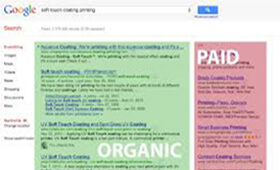
22 essentials you need for optimizing your site part 2
March 11, 2016
The future of search: 2016 and beyond Industry
March 18, 2016
Each of us is a SEO salesperson, at least in part; it’s our job to help clients understand the value delivered by our services. There are a number of time-tested ways of doing this, the most common of which is to calculate year-over-year traffic and revenue increases from the organic channel.
Many times, I have worked with retailers that have great brand recognition driven by big PPC and print advertising budgets. This sometimes leads to the belief that their organic traffic is all branded and only a side effect of their PPC or print efforts. There may also be an IT manager or Web Developer telling the marketing manager they’ve got SEO covered.
Setting aside the argument that branded traffic can be credited to SEO’s focus on indexation, organic site links and/or reputation management, it is easy to see that the rise of “keyword not provided” has made countering this argument more difficult, because there is little analytics visibility into the non-brand keywords that are driving conversions and revenue.
In today’s post, I would like to share a method I’ve successfully used in the past not only to differentiate brand from non-brand traffic, but also to assign a value to non-brand traffic that a PPC-minded manager can appreciate.
Google Search Console’s “Search Analytics” report
Within Google Search Console, it is no secret that SEO pros can use the Search Analytics report to fetch the past 90 days of organic search queries that have driven traffic to the client’s site. Although there are valid conversations about data discrepancies that appear within this report’s click count, we can absolutely use this report.
What we’re looking for are only the non-brand keywords. There are a number of ways to filter out branded keywords, but an Excel-only way is to use wildcards to delete any queries with the brand in it.
You may have to spot-check for brand misspellings or things that the wildcard deletion missed but you should now have a list of non-brand keywords and 90 days of click data.
While seeing the value of this non-brand, organic traffic in PPC terms may not sway those who are determined to tell you the site “would have gotten this traffic anyway,” it is a great way to frame non-brand organic traffic in a way that PPC-minded managers can appreciate.
Even if you argue that your ranking achievements have driven clicks for only select keywords within this non-brand mix, the value will still be clear.
Moreover, you can also go on to apply an estimated, non-brand conversion rate and average order value to the clicks column to provide a ballpark estimate of the revenue driven by these non-brand clicks.




